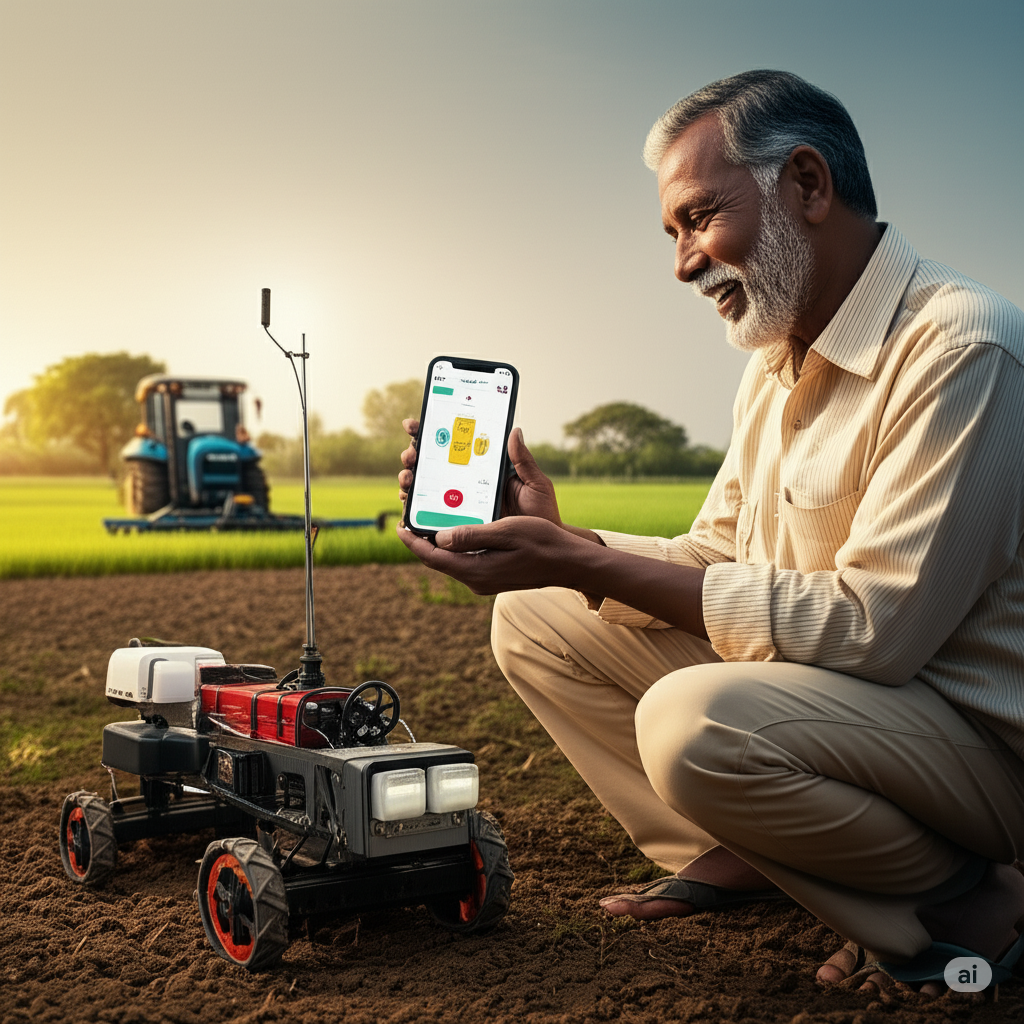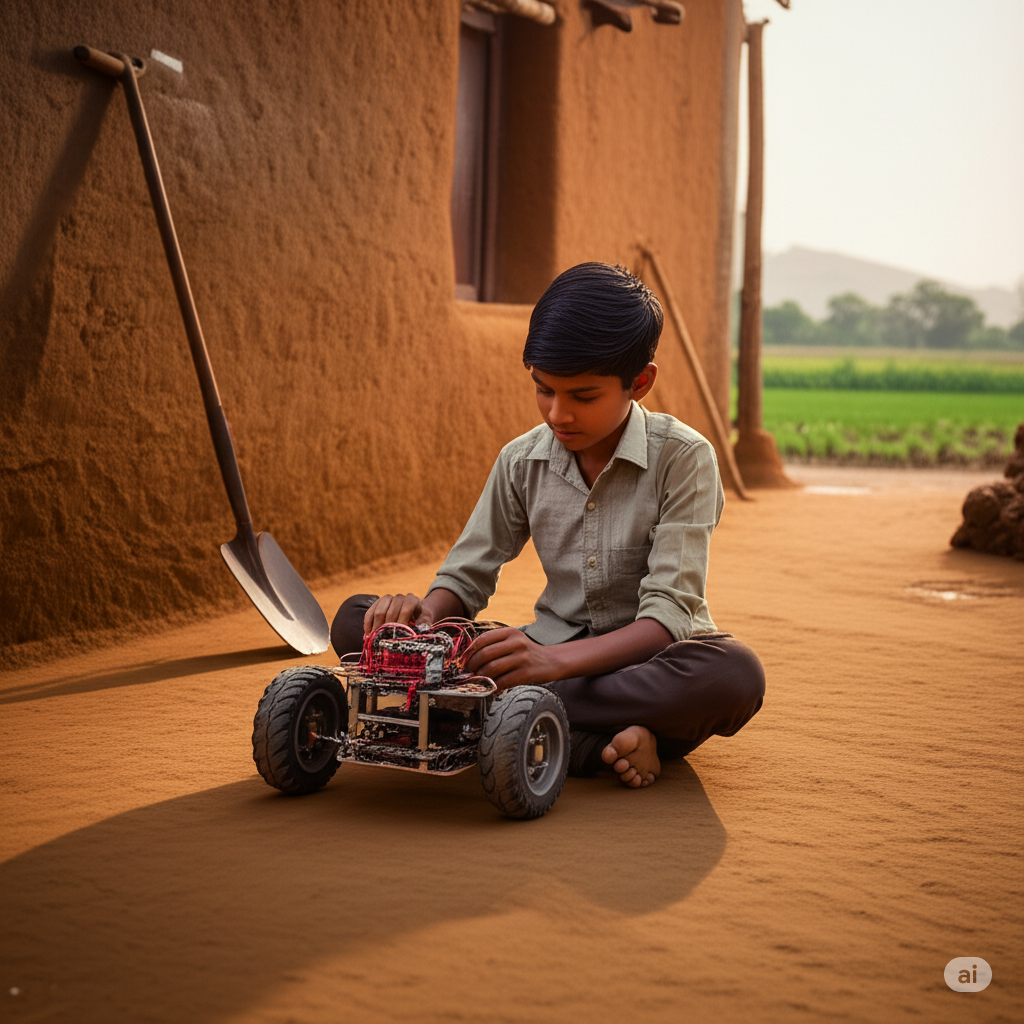A Teenager, a Village, and a Vision for India’s Farmers
In the quiet village of Awankhed in Maharashtra’s Nashik district, a new kind of innovation is sprouting—not in a lab, but on dusty farmland.
At the heart of it is a 17-year-old student, whose deep concern for his farmer uncle’s backbreaking work led him to design ‘KrushiBot’—a low-cost, AI-enabled agricultural robot built for India’s smallest and often most invisible farmers.
His story is a powerful example of how grassroots innovation can meet next-gen technology to drive real change in Indian agriculture.
🇮🇳 India’s Farming Crisis: A Brief Context
India’s agricultural sector supports nearly 60% of the population, yet:
- Over 85% of Indian farmers own less than 2 hectares of land
- Manual labor still dominates, especially in non-mechanized states
- Income insecurity, climate change, and loan debt continue to plague farmers
While agri-tech has seen growth, much of it doesn’t reach small and marginal farmers, who lack access to big-budget solutions.
This is where KrushiBot stands out—it’s built by a farmer’s family, for farmer families.
🤖 What Is KrushiBot?
KrushiBot is a compact, AI-powered farming assistant robot developed by the 17-year-old innovator with support from local mentors and his school.
🌟 Key Features:
- Automates routine tasks: seeding, spraying, weeding
- Controlled via a smartphone app with local language support
- Uses computer vision to identify crops vs. weeds
- Works on solar power to reduce energy costs
- Built using upcycled and affordable components
Its goal? To reduce the physical burden, time, and cost of everyday farming tasks—especially for elderly or solo farmers.
🧠 Why It Matters: Local Innovation Solving Local Problems
This isn’t a case of imported tech from Silicon Valley. It’s context-specific, shaped by:
- Knowledge of crop cycles in Nashik
- Fieldwork with real farmers
- Affordability for rural users (prototype cost under ₹15,000)
“Innovation doesn’t need to come from top labs—it can start with local empathy,” says a mentor from the regional science innovation hub.
📊 The Agri-Tech Gap in India
| Area | Large Farmers | Small/Marginal Farmers |
|---|---|---|
| Access to automation | Tractors, drones | Mostly manual |
| Agri-fintech | Credit, insurance | Low penetration |
| Market linkages | Direct selling online | Still via middlemen |
| Tech awareness | Agri apps, sensors | Limited smartphone use |
KrushiBot bridges this gap by:
- Offering voice-based control
- Targeting low-cost production
- Partnering with rural schools and co-operatives
🧪 Technology Behind KrushiBot
Though in its early prototype stage, KrushiBot uses:
- Open-source microcontrollers (e.g., Arduino, Raspberry Pi)
- Machine learning algorithms trained on local crop data
- IoT sensors for soil moisture and temperature
- GPS-based navigation for field coverage
- Rechargeable solar battery modules
It’s modular—which means add-ons like pesticide sprayers or irrigation control can be added based on need and budget.
🧒 The Teen Behind It: Young, Curious, Driven
The 17-year-old inventor (name withheld for privacy) is a science fair regular and DIY tinkerer. He:
- Grew up helping on his uncle’s farm
- Learned basic coding via free YouTube tutorials
- Used scrap metal, bicycle wheels, and discarded phone parts to create the prototype
His story echoes the idea of “frugal innovation” or Jugaad tech—building solutions using minimal resources but maximum impact.
🌿 Impact Potential: What Could KrushiBot Solve?
1. 🧺 Reduce Physical Strain
Elderly farmers often walk 6–8 km daily while spraying or weeding. KrushiBot cuts this down drastically.
2. 💸 Lower Input Costs
By applying fertilizers or pesticides only where needed, it reduces chemical use by up to 40%.
3. 🕐 Save Time
Tasks that take 4 hours manually can be done in under 1 hour with KrushiBot.
4. 👨👩👧 Empower Women Farmers
With voice control and ease of use, it enables rural women to participate more actively in farm tasks.
🚀 What’s Next for KrushiBot?
- Patent filing is underway
- Local trials being run across 3 villages in Nashik
- The teen is seeking mentorship, micro-funding, and incubation
There is potential to scale this model across Vidarbha, Marathwada, and even drought-prone regions of Rajasthan and MP.
💡 Lessons from the Ground: Why This Matters Nationally

India is promoting:
- Atmanirbhar Bharat in tech
- Agri-startup funding through NABARD, ICAR, and DPIIT
- STEM learning under NEP 2020
KrushiBot hits the sweet spot of all three: Made in India, For India, By India’s youth.
It also challenges the common narrative that rural India is just a consumer of tech—in reality, it’s becoming a creator of innovation.
🔁 From KrushiBot to a Movement: What’s Possible?
Imagine if every district had:
- Youth tech clubs solving local problems
- Government grants for rural prototypes
- Partnerships between schools, agri-cooperatives, and colleges
KrushiBot could be the first spark in a broader grassroots tech movement that brings AI, robotics, and frugal engineering to India’s smallest farms.
🧭 Conclusion: India’s Farming Future May Start in a Village, Not a Lab
In Awankhed, a 17-year-old has taken a real problem, applied curiosity and empathy, and turned it into a tool that could change thousands of lives.
💬 “I just wanted to help my uncle farm with less pain,” he says.
That, in its purest form, is what real innovation looks like.
As India imagines a digitally empowered rural economy, stories like KrushiBot remind us: the future doesn’t only arrive from above—it often grows from the ground up.








+ There are no comments
Add yours